- Administrator
- Albums and Singles
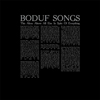 The last Boduf Songs album featured a reproduction of a Zdzisław Beksiński painting. His fantastic art always conveys a sense of doom which reaches far beyond the borders of the picture itself. On this album, Mathew Sweet fully captures this same sense of unearthly displacement: "There’s no way out and no way home." The music of Boduf Songs has also been pushed further than before; while the dreamy campfire arrangements are still present there is also a massive diversion into previously unexplored (at least by Sweet and company) musical territories. The end result is the best Boduf Songs album yet.
The last Boduf Songs album featured a reproduction of a Zdzisław Beksiński painting. His fantastic art always conveys a sense of doom which reaches far beyond the borders of the picture itself. On this album, Mathew Sweet fully captures this same sense of unearthly displacement: "There’s no way out and no way home." The music of Boduf Songs has also been pushed further than before; while the dreamy campfire arrangements are still present there is also a massive diversion into previously unexplored (at least by Sweet and company) musical territories. The end result is the best Boduf Songs album yet.
Sonically, "I Bought Myself a Cat O Nine" picks up from where How Shadows Chase the Balance left off: poised chords and Mathew Sweet’s hushed vocals come together to make a textbook Boduf Songs piece. The lyrics brim with a violence which should be unsuited to the music but work all the better because of the incongruity: "My hammer feels the urge to nail you to the ground." With the album beginning so predictably for Sweet (although predictability does not occlude beauty), my jaw dropped during the second song "Decapitation Blues." After an unassuming opening, it erupts into powerful and sinuous bass riff with crashing drums. I would expect something like this from a band like Grails but hearing Sweet’s vocals over it brings it into a whole other realm.
Halfway through the album, it sounds like the wrong music is on the record. "I Have Decided to Pass Through Matter" both reads as a very Coil-esque title but their influence is felt deeper with the warped vocal samples and artificial sounds. However, this is not simply pastiche as a delicate acoustic guitar melody cuts through the murky noise. Boduf Songs pull their music into more unorthodox forms during "The Giant Umbilical Cord That Connects Your Brain to the Centre of the Universe;" ebow drones almost overpower the harmonious roots of the song, deliberately obscuring what logically should be the focus of attention.
Stepping back and considering the album as a whole, I cannot help but be impressed at how Boduf Songs bring together such a heavy atmosphere with so much melody. This Alone Above All Else in Spite of Everything sounds unified in a way that many other albums fail to achieve; I can understand why this is on LP only as it forces us to digest the album in one sitting instead of it being put on shuffle or dissected into playlists. The darkly transcendental lyrics sketch out grim but psychedelic episodes which weave together around a central point. The thematic elements of the album run like stitches through the songs, drawing them tight to each other and each one revealing a little of another. The overall impact of the album increases with each time I listen to it, I can say now that this will be looked back on as a highpoint in Boduf Songs’ already superb oeuvre.
samples:
 
Read More
- Administrator
- Albums and Singles
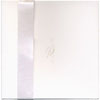 What initially began as two 15 minute pieces on their first collaboration is now a sprawling four hour surround sound album. Sonically, the result is consistent with the first two installments, leaning more towards Andrew McKenzie's dark, impenetrable drone than the skittering, fragmented rhythms of Sean Booth and Rob Brown.
What initially began as two 15 minute pieces on their first collaboration is now a sprawling four hour surround sound album. Sonically, the result is consistent with the first two installments, leaning more towards Andrew McKenzie's dark, impenetrable drone than the skittering, fragmented rhythms of Sean Booth and Rob Brown.
The first of the two DVDs included in this package consists of only two untitled pieces.The first of these is a 48-minute track that initially begins with a slow, distant drone that takes its time to stretch out.While over its length it feels static at times, in truth it slowly, but carefully evolves: first into rumbling, bass-heavy passages, then towards shimmering, lighter moments before hitting shrill and painful heights.All the while there is an impressive amount of nuance and variety to be heard.
Eventually tortured violin strings give way to static-laden percussive loops that become more and more the focus until the piece ends with a painfully violent noise stab at the end.The second piece picks up immediately, mixing field recording like expanses and sonic errors.This eventually reached a point in which I for one questioned whether my receiver was breaking down or not, and then it pulls away, focusing the remainder on heavy sub-bass frequencies and distant, expansive ambience.
The second disc consists of a single two hour composition, which, in some ways feels like a further abstraction from the first.At first examination, it sounds like an extremely long passage of filtered white noise, but a closer inspection reveals a lot more going on beneath.Again, the pitch slowly but steadily varies, from moments of sub-woofer shaking rumble to tinnitus like squeals.While the piece feels like the first two combined with more breathing room, it also possesses a digital sheen throughout much of it that feels like the Autechre boys’ influence.
The use of 5.1 surround sound is extremely sparse, filtering elements of the echoing tones to separate channels, but some moments, such as the percussive loop at the end of the first piece, employ a panning effect that goes around the entire room to an excellent effect.
As a fitting continuation in this series, the two discs are packaged lavishly in textured cardstock, with printed art cards and an outside containing folder.I should note a caveat:the discs are authored as standard DVDs (not that bastard DVD-A format), but are PAL encoded.While the visual component is not necessary (the only graphics are a slowly transitioning background, from white to black or black to white, depending on the disc), one of my players refused to play the disc since it was PAL encoded, the other was more accommodating.
This set is anything but casual listening:if the four hour duration wasn't a hint, the menu-less navigation of the discs confirms it.However, the package is a more than fitting third installment in the series of collaborations between Autechre and the Hafler Trio.It takes some time to soak in and once again the release feels more h3o than Ae. It is a fascinating experience.
(due to the multichannel DVD format, no samples available)
Read More
- Administrator
- Albums and Singles
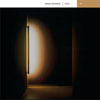 Tietchens, one of my favorite sound artists, approaches this new album from a different tact than his others. Rather than composing with new sounds, he instead chose to recycle existing material and recordings through various processing techniques, some receiving up to ten reinventions before completion, resulting in one of his most sparse, yet diverse works.
Tietchens, one of my favorite sound artists, approaches this new album from a different tact than his others. Rather than composing with new sounds, he instead chose to recycle existing material and recordings through various processing techniques, some receiving up to ten reinventions before completion, resulting in one of his most sparse, yet diverse works.
Many of the pieces appear in various mutated forms, sometimes feeling linked to one another, other times appearing as stand-alone works.For example, "L2RB" and "L2RD" work together almost as a single composition, but while the former opens with sparse and quiet sounds and digital processing, the latter takes the erratic digital noises and converts them to organic, piano like synth pulses.The dichotomy works perfectly, balancing the digital alienation of the first with the inviting, relaxing sounds of the second.
"L2RC," which uses some of the same tonal elements as the other two similarly titled tracks, but frames those elements in an entirely different way.Both "p1" and "p1B" are also linked conceptually, with an emphasis on distant, subtle waves of static.On "p1B," however, Tietchens adds erratic swells of violent feedback that are startling enough to make focusing on the quiet details difficult.
"Nox 3" focuses less on quiet, far-off noises and instead opts for a series of electronic blips and stutters, giving a more collage-sense and also feeling in-line with some of Tietchens work of the early 1980s."Nox 1" is more deliberate, emphasizing clinking sounds and shrill, glassy, but melodic passages of sound.
Closer "p2A" pans busy, processed elements from left to right, busy and chaotic but never lacking form or structure.There is a rhythmic click quite low in the mix that almost sounds like cymbals from a drum machine that are filtered and processed into near oblivion, but that may be entirely a figment of my imagination.
One of the side-effects of this meticulous processing and sonic recycling is that, with abstractions of abstractions, the result is a series of sounds that is so far removed from convention that they seeming become a different beast entirely.In the hands of such an expert craftsman such as Asmus Tietchens, the formless sounds are given shape and structure.Even though they are relatively sparse, these compositions reveal new details with each listen.
samples:
 
Read More
- Administrator
- Albums and Singles
 It is easy (and not unreasonable) to critique Mark McGuire's voluminous solo output as excessive and somewhat redundant–no one needs every single album he releases.  However, it is worth noting that he has maintained a remarkably high (and still seemingly increasing) level of quality for an artist with over three dozens releases to his name and his "major" releases (like this one) tend to be especially good.  Get Lost explores a lot of ground that McGuire has already covered many times before, but he is still covering it beautifully and even exhibits some welcome signs of evolution.
It is easy (and not unreasonable) to critique Mark McGuire's voluminous solo output as excessive and somewhat redundant–no one needs every single album he releases.  However, it is worth noting that he has maintained a remarkably high (and still seemingly increasing) level of quality for an artist with over three dozens releases to his name and his "major" releases (like this one) tend to be especially good.  Get Lost explores a lot of ground that McGuire has already covered many times before, but he is still covering it beautifully and even exhibits some welcome signs of evolution.
It recently occurred to me that the single most impressive thing about Mark McGuire's music is how gloriously and improbably anachronistic it is.  While he has certainly carved out a very unique style that sets him far apart from every other guitarist in the underground milieu, his larger accomplishment is the fact that he sounds like he is recording in a fictitious, sun-dappled Van Halen-imagined '80s while still seeming informed of all post-grunge developments in music.  For example, several songs here ("Get Lost," in particular) evoke vague and idyllic concepts like "childhood" and "California."  Also noteworthy is the fact that Mark has no reservations about sounding upbeat and anthemic (not at all the norm in current psych/experimental circles) and championing unhip metal/prog tropes like harmonized guitar solos without the slightest trace of winking irony.  Given that he is from the Midwest and is too young to remember the '80s, his guileless channeling of innocence, blue skies, and beaches is both unsettling (in a "Faustian pact" way) and hugely refreshing.
Mark evokes some other moods on Get Lost too though.  The most unexpected curveball is his addition of somnambulant, chant-like vocals to the bitter-sweetly jangling "Alma" and its electronically gurgling reprise.  It isn't nearly as major a development as it could have been, as it is more of a textural move than a songwriting sea change, but it is odd to hear a human voice on a Mark McGuire record (especially a seemingly world-weary one).
McGuire also gives electronics an increased role, most conspicuously on the album's epic 20-minute centerpiece, "Firefly Constellations," which is largely built upon a bed of burbling and queasily glistening analog synth (or something that sounds a hell of a lot like it).  In fact, "Firefly" differs dramatically from the rest of the album in an arguably bad way:  most of it sounds far more like a forgettable Kosmiche artifact from the '70s than something distinctly McGuire-esque.  Also, it seems a bit annoying, static, and overlong...until it morphs into a rather sublime outro around the 13-minute mark.  I am still on the fence about whether the pay-off needs or justifies such a sluggish build-up, but it is impressive enough to elevate the song from "bad idea" to "somewhat successful experiment that may continue to grow on me."
Successful or otherwise, it is definitely heartening to hear McGuire publicly wrestling with new ways to expend his aesthetic, as those quirks and detours make Get Lost stand out a bit from the rest of his vast oeuvre and bode well for his continued relevance.  At this point, it is pretty much a foregone conclusion that a new McGuire album will be quite good (as this one is), but a bit more unpredictability sweetens the deal immeasurably.
Samples:
 
Read More
- Administrator
- Albums and Singles
 When Michael Gira closed the door on Swans over ten years ago, the title of this album spelled out clearly that he was done with the concept. Swans have always taken perversity in their stride and the perversity of a (then) final, live album being their masterpiece fits comfortably within my view of their work. It is easy to scoff now and talk about the financial benefits of reunions but it is obvious from every note on this double live album that the sheer energy required to fuel the fires of a group like this could not last forever. Changes of life pushed him away from Swans and now a similar situation has caused him to abandon The Angels of Light in order to pick up the flame that burned at its brightest here.
When Michael Gira closed the door on Swans over ten years ago, the title of this album spelled out clearly that he was done with the concept. Swans have always taken perversity in their stride and the perversity of a (then) final, live album being their masterpiece fits comfortably within my view of their work. It is easy to scoff now and talk about the financial benefits of reunions but it is obvious from every note on this double live album that the sheer energy required to fuel the fires of a group like this could not last forever. Changes of life pushed him away from Swans and now a similar situation has caused him to abandon The Angels of Light in order to pick up the flame that burned at its brightest here.
Clanging bass chords ring out with the clear precision of the first tentative drops of a tropical storm on a placid sea. As "Feel Happiness" gains momentum, the drops become a torrent and the piece goes from crescendo to crescendo; the climax becoming a plateau of ecstatic sound. When it becomes almost too much, it breaks into a pleasant refrain and Gira’s voice breaks through the music: "I’m truly sorry for what I never did/But I forgive you too for your indifference." This was my gateway into Swans almost a decade ago and it shocked me with its graceful balance of lyricism and power. Even now, having amassed the rest of the Swans back catalogue, I would be hard pressed to pick an album ahead of Swans Are Dead (only Public Castration is a Good Idea comes close with the best of their studio albums coming in a pack afterwards).
The rest of the first disc covers the majority of a typical Swans setlist in 1997; new material like the aforementioned "Feel Happiness" rubbing shoulders with "greatest hits" like "I Am the Sun" and "I Crawled." However, Gira was unwilling to recreate the older songs as they were originally performed; the group radically revamped these pieces into entirely new musical statements. Jarboe replaces Gira on vocal duties on "I Crawled," turn the submissive lyrics on their head as she imbues the words with a strong, feminine conviction before unleashing the most startling vocals I have ever heard from a woman with the possible but not absolute exception of Diamanda Gal√°s.
The disc and indeed the original lifespan of Swans finished with a tremendous version of "Blood Promise" from The Great Annihilator. A looped recording of what sounds like The Yale Whiffenpoofs is the entrance way into this massively extended version of the song: "We are all little lambs who have lost our way – baa, baa, baa." The almost Disney-like arrangement weighed down with a religious conviction which matches the group’s own music remarkably well. Like this old song, Swans were wrapping their deep, bleak message in pretty music. "Blood Promise" is a perfect example of this as Gira’s words have a weight that is lifted easily by the poised melodies and rhythms. The group lock into a repetitive but shifting structure, building into a series of crescendos which I want to last forever (and I’m not alone, you can hear an audience member shout "Don’t stop!" near the end).
The second disc (documenting a show from 1995) follows a similarly styled set list as the first but with a heavier emphasis on Soundtracks for the Blind material. Again, older Swans songs are reworked into new forms but it is the material from Soundtracks for the Blind which impresses most here. It would be impossible to recreate an album like that in a live setting, yet I would argue that the selections made from that album work better here than in the studio. "The Sound" has a depth here which it never reaches on Soundtracks for the Blind and all of the musicians sound like they are playing for their lives; in particular Larry Mullins’ skilled mix of drumming and vibraphone is stark and achingly beautiful. After the song’s climax, Gira’s roar cuts through the music to paralyze us.
Like "I Crawled" on the first disc, "Your Property" is given a face lift on the second disc. Again, Jarboe takes control of the microphone and shifts the focus of the song away from the brute masculinity of the original. However, it does not work quite as well as "I Crawled" but is a worthy inclusion nonetheless. Jarboe and indeed the entire band come across much stronger on "Yum Yab;" the martial drum beat and reeling guitars bringing out an aggression in Jarboe which gives the song an intensity that was lacking in "Your Property."
As I stated recently, for me Swans have always been about the live albums from the roughly recorded to the higher fidelity concert recordings. Swans were (and hopefully will be) a band who worked best as a live unit. Along with Neil Young and Crazy Horse’s epic Weld and Fushitsusha’s various live documents, Swans Are Dead casts a large, imposing shadow on pretty much all other music I have heard. These are albums I go to more than any others and for me Swans Are Dead dwarfs what would otherwise be an impeccable recording career.
samples:
 
Read More
- Administrator
- Albums and Singles
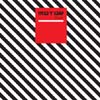 The Nitzer Ebb-inspired debut from this techno duo demonstrates once again that a collection of singles, actual and potential, does not an album make. Electronic musicians continue to fall into this predictable trap.
The Nitzer Ebb-inspired debut from this techno duo demonstrates once again that a collection of singles, actual and potential, does not an album make. Electronic musicians continue to fall into this predictable trap.samples:
Read More
- Administrator
- Albums and Singles
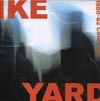 As labels large and small continue to mine the dormant backcatalogs of forgotten post punk artists, hoping to cash in on the continuing dance punk fad, it hardly fazes me that Ike Yard, a group name-checked in Simon Reynolds' latest book, would get this type of revisionist treatment.
As labels large and small continue to mine the dormant backcatalogs of forgotten post punk artists, hoping to cash in on the continuing dance punk fad, it hardly fazes me that Ike Yard, a group name-checked in Simon Reynolds' latest book, would get this type of revisionist treatment.samples:
Read More
- Lucas Schleicher
- Albums and Singles
Alien8
Live in Montreal is all about BDSM and designed specifically for a psychological experience in that way. All of this single 38 minute piece works within the bounds of depravation and excess, withdrawing the capacity of sense from the psyche of listener at times and then flooding it with sensation at other times. The blindfold, apparently used by audience members at the show, furthers this perspective: remove all primary perception from the individual and subject them, then, to the experience of helplessness. Perhaps taking an explicitly sexual perspective on this disc is going beyond the information and intent López set out with, but I don't think it is entirely inappropriate.
The music is, as usual, manipulated field recordings. The soft and airy hum of some environment is interrupted with spasms of white noise, dull explosions, and then abrupt silences or near-silences. It's as though López is pulling the proverbial chair out from under me when this happens. This occurrence repeats itself in such a way that I assumed I'd be able to predict it every time, but because nothing López does has any rhythmic device, it is impossible to know when these radical changes are going to occur.
Listening to Live in Montreal is a lot of fun and I get the feeling that, were I to play it for friends in the right situation, they would be genuinely shocked or would at least take notice of López's approach. The silences, at some point, do seem rather painful, if only in a limited way. After having so much sound tossed at me, I was anxious for it to return and actually got frustrated when López took his time making it happen. Listening to this in a dark venue of some kind might provide more kitsch than visceral experience, but listening to it at home with the lights out my eyes closed has generated some amount of anxiety.
Drone would be a hell of a lot more popular if more artists took it to some sexual level. Maybe López didn't intend for this to be the case with Live in Montreal, but I'm not against reading a little bit of visceral fun into this album, especially when its machinations are visceral by nature.
Read More
- Lucas Schleicher
- Albums and Singles
CIP
KK.Null and z'ev is a nice pairing on paper, both of them have been around a long time and have produced a high quality body of work that encompasses multiple genres, styles, and perspectives. Listening to the record they made together does not convey such a history. While aesthetically the rather quiet and more subtle moments, like on "Untitled 2," are pleasing and perhaps even hypnotic, Artifical Life on the whole sounds like the product of two very different minds working in two very different ways. Had those two approaches synthesized well this would have turned out to be a better record, but there's a severe lack of conceptual intent keeping all the pieces of the puzzle from melding into a satisfactory whole.
There are all manner of bells, metallic plates, synthetic chirping, and noise to be found throughout this album's five songs, some of them genuinely exciting because of the tension they create, but the lack of consistency between songs is frustrating. The aforementioned "Untitled 2" is atmospheric, darkly lit and crawling with all sorts of unseen monstrosities and nervous twitching, but the 19 minutes of music on either side of it don't even come close to approximating the effect it has on me. Much of this has to do with the simplicity this song exhibits. It isn't entirely acoustic on z'ev's end (some of the drums were manipulated in the arrangement, I assume), but it is as close as the album gets to pure percussion and thus as close as the album gets to direct power and elegance. "Untitled 3" sounds like it could be techno if the right producer had gotten ahold of it and "Untitled 4" is just too dull to sit through despite its comparatively short running time.
"Untitled 5" does everything "Untitled 2" did right and features more of z'ev's metallic percussion. Portions of this fifth and final piece are almost melodic and, when played next to "Untitled 2," sound progressive: it takes up an almost narrative quality. Get rid of the other three pieces on Artificial Life and it would've made a fine short-player. As it stands there's too much garbage cluttering this release up.
Read More
- Administrator
- Albums and Singles
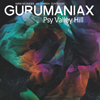 Guru Guru were one of the finest groups of their era, the closest any of the krautrock groups to the progressive rock of Gong or The Soft Machine but still they stood apart. They contained enough rock and blues to make them accessible but pushed these forms into new shapes thanks to their impressive improvisations. Containing both Mani Neumeier and Ax Genrich, Gurumaniax are an almost complete reunification of the classic line-up of Guru Guru. The name change is in part due to the passing of bassist Uli Trepte whose large shoes are now filled by Guy Segers. This album is the result of one week’s work in the studio and sounds as vibrant and stunning as Guru Guru ever were.
Guru Guru were one of the finest groups of their era, the closest any of the krautrock groups to the progressive rock of Gong or The Soft Machine but still they stood apart. They contained enough rock and blues to make them accessible but pushed these forms into new shapes thanks to their impressive improvisations. Containing both Mani Neumeier and Ax Genrich, Gurumaniax are an almost complete reunification of the classic line-up of Guru Guru. The name change is in part due to the passing of bassist Uli Trepte whose large shoes are now filled by Guy Segers. This album is the result of one week’s work in the studio and sounds as vibrant and stunning as Guru Guru ever were.
There are few classic bands which can claim to be as vital today as they were in their heyday. Faust have done well for themselves in not only being as good as they ever were but have divided into two equally exciting Fausts. On the other hand, Kraftwerk have become the Tony Bennett of krautrock who do a great live show of hits but show little to no capacity for any new creativity. Gurumaniax sit nearer to Faust than to Kraftwerk in this regard. Their intentions are in the right place and several times they come very close in generating the same uninhibited excitement that Guru Guru did all those years ago.
Much of Psy Valley Hill follows the same path as seminal Guru Guru albums like UFO and Kang Guru; the DNA of rock’n roll being spliced, rearranged and reassembled into something that still retains the vigour of the music but works in previously inconceivable way. "Spaceship Memory" drags the seminal Guru Guru piece "Space Ship" through a time warp, the unmistakable guitar riff re-tailored and set bursting through the cosmos before arriving at the same sprawling expanse of a distant galaxy as the original. This time, the instrumentation sounds earthlier as if these are celestial explorers returned to ground and trying to recreate the psychedelic experiences of unknown geometries and new colours for the benefit of those left behind.
"Voodoo Touch" begins sounding like a pub band doing something Krautrock-influenced but the impeccable drumming of Neumeier brings the piece around to stranger territories. As the piece progresses, the other instruments start vibrating away from anything resembling pub rock. It sounds like it is straightforward blues-influenced rock but the layering of instruments and drifting of structures open the music up into a wider, genre-free existance. The same sensations of an almost nostalgic rock style being co-opted into something newer and stranger run through the album’s climax "For Uli T." (dedicated of course to Trepte). While the piece never progresses in a way I expect it to, its slinking bass line provides a audible monument to Trepte’s own style.
Overall, this is a fun album but not a true return to the brilliance that Guru Guru were capable of in their heyday. However, for a group of musicians who must be eligible for their bus passes Psy Valley Hill is a monster. Neumeier certainly sounds like a man less than half his age (in fact, he sounds tighter in places than he did with Guru Guru!). Plus the fact that Gurumaniax seem to be truly into what they are doing unlike any of the cash cow reunion bands that are clogging the release schedules and music festivals over this last decade counts for a lot.
samples:
 
Read More
- Administrator
- Albums and Singles
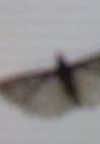 Across the five pieces on this album, Ernst Karel and Annette Krebs explore an expansive but tiny sound world; the crackles and rough noises are akin to macro photos of the components of unknown objects. The whole item is out of frame but the viewer (or in this case, listener) is given a generous amount of detail of a small part. Here the sources of the sounds are deliberately kept obfuscated but it forces the listener to pay attention to the minutiae of these noises. The result is an engaging and exhausting album which challenges and drains in equal measure.
Across the five pieces on this album, Ernst Karel and Annette Krebs explore an expansive but tiny sound world; the crackles and rough noises are akin to macro photos of the components of unknown objects. The whole item is out of frame but the viewer (or in this case, listener) is given a generous amount of detail of a small part. Here the sources of the sounds are deliberately kept obfuscated but it forces the listener to pay attention to the minutiae of these noises. The result is an engaging and exhausting album which challenges and drains in equal measure.
While the music is generally formless, it is not lacking in direction. As Karel generates swells of electronic sound, Krebs populates these empty landscapes with tiny denizens and features. Her guitar playing is mostly camouflaged, what I assume is Karel’s work could be hers or equally what is listed as "objects" and "tape" in the liner notes I could be misidentifying as being something else entirely. The textures in "Falter 3" could easily be stones being rubbed together, apples being crushed or electronically synthesized. The ambiguity of the sounds gives the pieces on Falter 1-5 their attraction; there is nothing like a good mystery.
While it is easy to make comparisons with artists like Jacob Kirkegaard and even Philip Jeck, Karel and Krebs take a less conceptual approach to their music. The music falls closer to free improvisation than to the careful electronic works that would be at home on Touch. As such, Falter 1-5 does not lend itself to background listening as the contrasts and juxtapositions of the various sounds manifests only with careful attention. The silent pauses that appear throughout the album bring to mind the anti-rhythms of Keiji Haino; a sudden void which gives the listener a moment to take in what they have just heard.
"Falter 5" introduces a wider range of materials, human voices appear through a haze of tape hiss and the duo take on a tighter, almost musical approach to playing. It is the densest of the five pieces and stands out because of its sonic concentration. As it peters out and leaves a final blank slate hanging in the air, it is hard to enter into the music again or even to replace Karel and Krebs with something less intense. Falter 1-5 is one of those albums which is a gentle ripple on the surface but deep with hidden power, dragging me under and leaving me in no fit state to function afterward.
samples:
 
Read More


